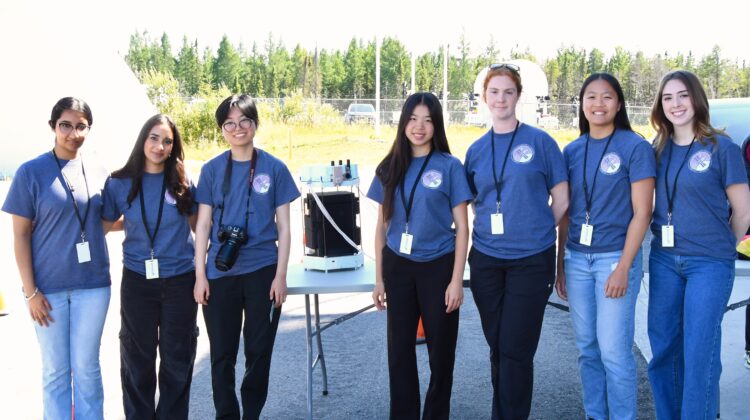
A student design team from the University of Waterloo in Ontario has seen their work soar into near-space during the Canadian Space Agency’s Strato-Science 2025 campaign in Timmins.
The experiment designed by the Waterloo Space Research Team (WSRT), Project ASTRA, was selected for the Canadian Stratospheric Balloon Experiment Design Challenge (CAN-SBX), a national competition that invites student teams to design, build and launch compact experiments on high-altitude balloons operated by the Canadian Space Agency (CSA). Project ASTRA tested machine learning to filter out cosmic noise – the radiation that disrupts electronic signals – with the goal of improving data transmission for satellites and future space missions.
ASTRA’s computer reinforcement learning model and full system operated for several hours in the stratosphere, despite extreme cold and low pressure. Students participated in every stage of the mission, from preliminary design reviews to tracking the high-altitude flight, to help them gain hands-on experience that mirrored professional aerospace projects.
‘Receiving our data after the flight was such a rewarding moment as it validated the performance of our mechanical, electrical and software systems all working together,’ said Mysha Hamid, a third-year systems design engineering student and WSRT’s team lead.
For the team, travelling to Timmins to witness the launch was a highlight. ‘Watching our experiment lift off with the CSA team was surreal,’ Hamid said. ‘It was the kind of experience that reminded us why we put in so many long hours preparing for this mission launch.’
The team also hosted workshops and astronomy tours to engage the public, efforts that earned them the Outreach Excellence Award from SEDS-Canada.
Next, WSRT members will present their space soldering research at the International Astronautical Congress in Sydney, Australia. Several students have been sponsored by the CSA to attend and represent Canada on the global stage.


